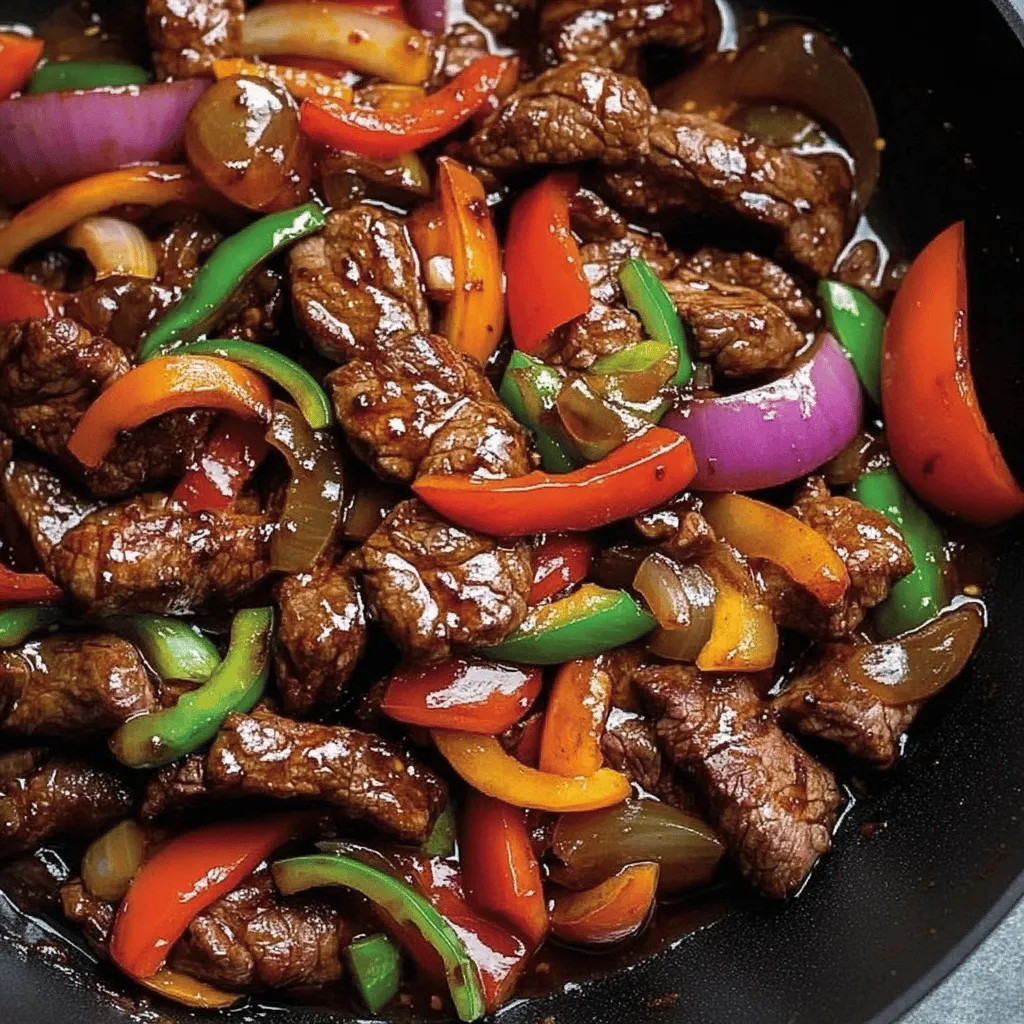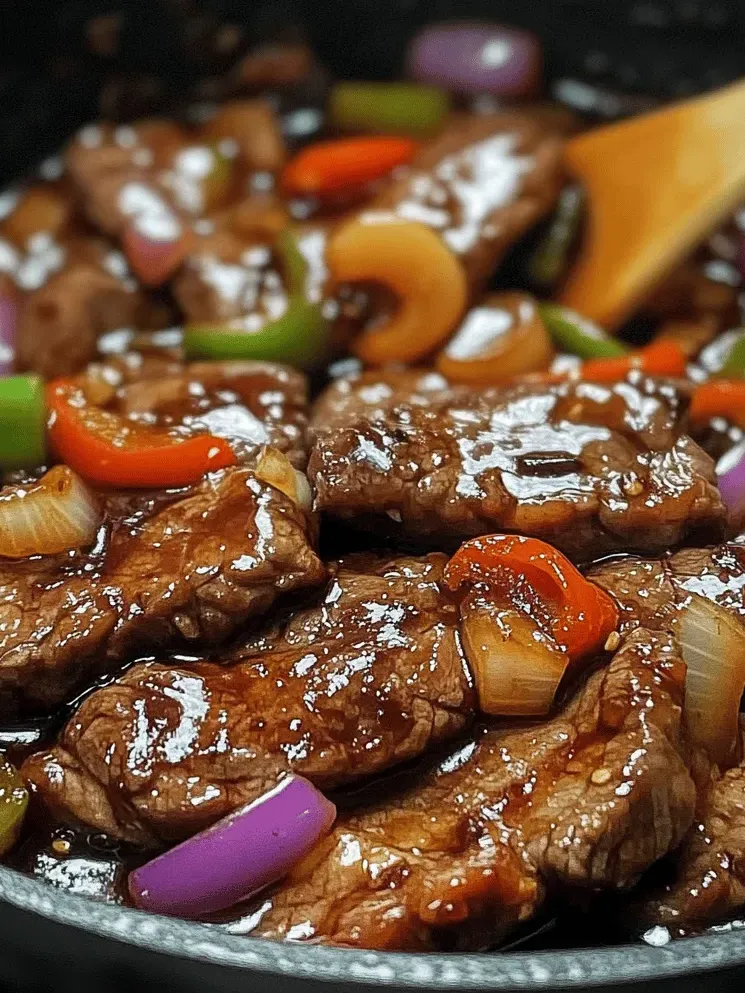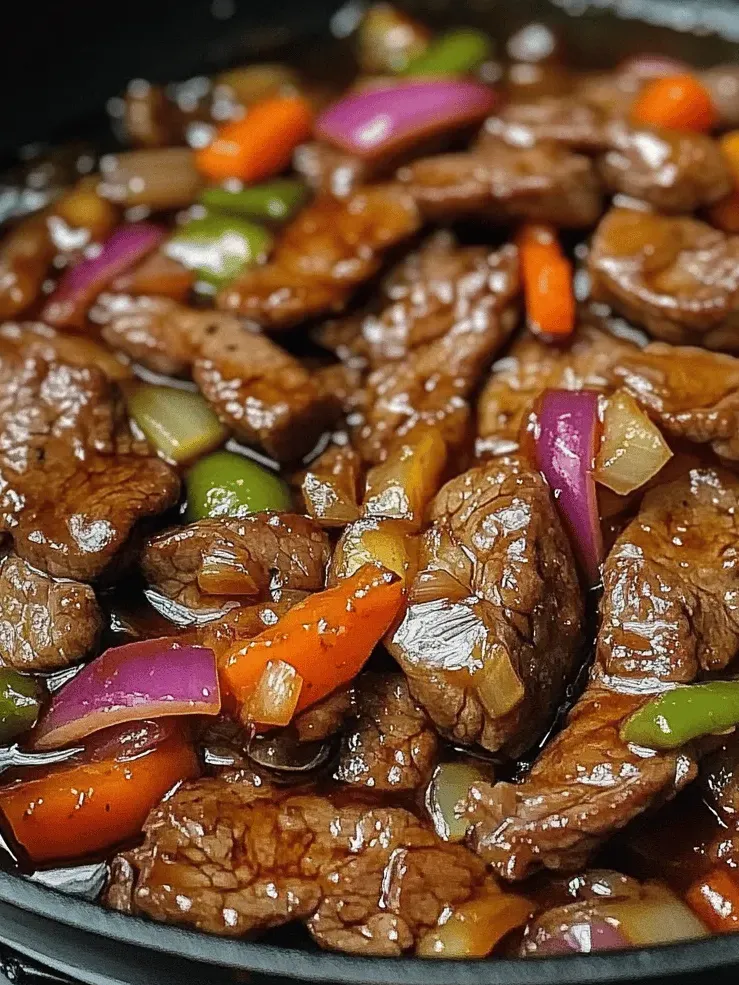 Save Pin
Save Pin
This homemade Chinese pepper steak turns everyday items into a fancy takeout-style dinner right at home. The hot mix of juicy beef with bright peppers makes a meal that's filling and eye-catching, just right for busy nights when you want something tasty but don't have tons of time to cook.
I came up with this pepper steak while trying to match my grandpa's favorite Chinese restaurant dish. After testing it a few times, this version got his thumbs up, and it's now a must-have at our family get-togethers.
What You'll Need
- Beef top sirloin steak: Gives you just the right mix of softness and taste. Try to find pieces with good fat marbling for extra juiciness.
- Soy sauce: Makes the base for your beef soaking mix. Go with low-sodium if you don't want too much salt.
- White sugar: Cuts the saltiness and helps the beef brown nicely.
- Cornstarch: Softens the meat and creates a silky coating that locks in moisture.
- Ground ginger: Brings a cozy, traditional Chinese taste that's not too strong.
- Vegetable oil: Its plain flavor lets other tastes stand out. Pick one that can handle high heat.
- Red onion: Has a bit more sweetness than yellow ones and adds nice color.
- Green bell pepper: Adds snap and freshness against the rich meat. Look for firm ones with shiny skin.
- Tomatoes: Bring tang and brightness that works well with the savory parts. Roma types stay firm while cooking.
Cooking Instructions
- Cut Your Beef Right:
- Slice sirloin across the grain into thin strips about half an inch thick. This step really matters because it makes your beef tender by cutting through those tough muscle fibers. Don't rush this part since how you cut affects how the meat feels when you eat it.
- Mix Your Sauce:
- Stir soy sauce, sugar, cornstarch, and ginger until it's completely smooth without any lumps. The cornstarch doesn't just thicken things—it also makes the beef super tender through a technique called velveting that gives you that real Chinese restaurant feel.
- Coat the Meat:
- Cover each beef strip with the sauce mix, using your hands if needed to make sure everything gets coated. Let the beef sit in this mix for at least 10 minutes while you cut up your veggies, though 20 minutes works even better for deeper flavor.
- Brown the Beef:
- Get your wok really hot until you see a bit of smoke before adding oil. Cook beef in smaller amounts so it doesn't get crowded and steam instead of brown. You want a nice brown outside but still juicy inside, around 3 minutes per batch. Take it out and set it aside.
- Handle the Veggies:
- Use the same wok to keep all those tasty beef bits. Throw in onions first and cook until they start to soften but still have some crunch. Then add bell peppers, cooking just until they turn brighter but stay crispy.
- Put It All Together:
- Put the beef back in the wok along with any juice that came out. Add tomato chunks last since they need very little cooking to stay whole. Gently toss everything so flavors mix while veggies stay crisp and colorful.
 Save Pin
Save Pin
This dish means a lot to me because it was the first Chinese food I got right all by myself. When I realized I could make these authentic flavors without following a recipe, it really boosted my cooking confidence. The way the soft beef mixes with slightly crunchy veggies creates a texture combo that makes everyone want seconds.
Getting Tender Meat Every Time
The meat-coating method in this recipe comes from traditional Chinese cooking and makes incredibly soft beef. The cornstarch creates a shield that keeps the meat from getting tough during hot cooking. For an even more authentic touch, try adding a spoonful of rice wine to your sauce mix. Let your beef soak for up to 30 minutes if you've got time, though even 10 minutes makes the meat noticeably better.
 Save Pin
Save Pin
Make It Your Own
Though the classic version calls for green bell peppers, feel free to play around with different colors. Red and yellow peppers add extra sweetness and look great on the plate, while a few thin slices of hot pepper can give a nice kick. Some folks like to throw in water chestnuts for more crunch or baby corn for something different. This dish works great for using up whatever veggies are sitting in your fridge.
What to Serve With It
White rice is the go-to side for pepper steak, but you can try brown rice for more nutrients or cauliflower rice if you're watching carbs. For a full Chinese-style meal, add some veggie spring rolls or a simple cucumber salad with rice vinegar and sesame oil dressing. A few toasted sesame seeds or green onion slices on top make it look fancy and add a finishing flavor boost.
Keeping and Warming Up Leftovers
This pepper steak warms up really well, so it's perfect for planning meals ahead. Keep any extras in a sealed container in your fridge for up to three days. When you're ready to eat it again, add a spoonful of water to bring back moisture, and warm it slowly on the stove instead of in the microwave to keep the veggies from getting mushy. The flavors often get even better overnight, so yesterday's pepper steak might taste even yummier than when you first made it.
Common Questions
- → What cut of beef works best for this dish?
Thin slices of top sirloin make the dish turn out great because they stay juicy when cooked fast. You can also try flank or skirt steak if that's what you have.
- → Can I use other vegetables instead of the ones listed?
Sure thing. Try throwing in some mushrooms, zucchini, or snap peas to switch up the flavors and textures.
- → How can I make this dish spicier?
Toss in some red pepper flakes, fresh chili slices, or a squirt of Sriracha while cooking to crank up the heat level.
- → Can I prepare this dish ahead of time?
You bet. Cut your meat and chop your veggies earlier in the day. Let the beef soak in the marinade for a few hours before cooking to save some time.
- → What type of oil is best for stir-frying?
Go for oils that can take the heat without smoking too much. Vegetable oil, peanut oil, or canola oil all work great for wok cooking.
